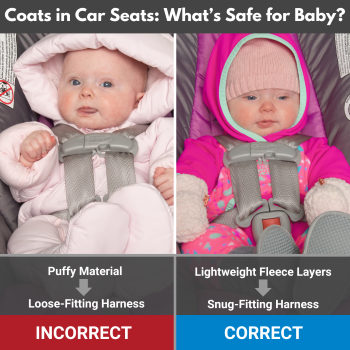The Basics
Slow down. It’s harder to control or stop your vehicle on a slick or snow-covered surface. In fact, in 2021, there were an estimated 121,156 police-reported crashes that occurred when there was snow/sleet conditions at the time of the crash. On the road, increase your following distance enough so that you’ll have plenty of time to stop for vehicles ahead of you.
Don’t crowd a snow plow or travel beside the truck. Snow plows travel slowly, make wide turns, stop often, overlap lanes, and exit the road frequently. If you find yourself behind a snow plow, stay far enough behind it and use caution if you pass the plow.
What to Do in an Emergency
If you are stopped or stalled in wintry weather, stay focused on yourself and your passengers, your car, and your surroundings.
- Stay with your car and don’t overexert yourself.
- Let your car be seen. Put bright markers on the antenna or windows and keep the interior dome light on.
- Be mindful of carbon monoxide poisoning. Make sure your exhaust pipe is clear of any snow and run your car only sporadically — just long enough to stay warm. Don’t run your car for long periods of time with the windows up or in an enclosed space.
Changes You May Notice
Tires
As the outside temperature drops, so does tire inflation pressure. Make sure each tire is filled to the vehicle manufacturer’s recommended inflation pressure, which is in your owner’s manual and on a label located on the driver's side door frame. Do not inflate your tires to the pressure listed on the tire itself. That number is the maximum pressure the tire can hold, not the recommended pressure for the your vehicle.
Some other tips:
- Inspect your tires at least once a month and before long road trips.
- It’s best to check the tires when they’re cold, meaning that they have not been driven on for at least three hours.
- Check each tire’s age. Some vehicle manufacturers recommend replacing tires every six years regardless of use.
An inspection is not just about checking tire pressure and age. Remember to check:
- for any damage or conditions that may need attention;
- the tread and sidewalls for any cuts, punctures, bulges, scrapes, cracks, or bumps. The tread should be at least 2/32 of an inch or greater on all tires; and
- your spare tire.
If you find tire damage, take your vehicle to a tire service professional.
Consider installing snow tires, but before buying new tires, visit NHTSA’s Tires page to review tire safety ratings. The Uniform Tire Quality Grading System (UTQGS) lets you compare tire treadwear, traction performance, and temperature resistance.
Car Seats
 In colder weather, parents typically dress their children in winter coats. But it’s important to know that heavy coats can interfere with the proper harness fit on a child in a car seat. When your child will be secured in a car seat, pick thin, warm layers, and place blankets or coats around your child after the harness is snug and secure for extra warmth.
In colder weather, parents typically dress their children in winter coats. But it’s important to know that heavy coats can interfere with the proper harness fit on a child in a car seat. When your child will be secured in a car seat, pick thin, warm layers, and place blankets or coats around your child after the harness is snug and secure for extra warmth.
Also, make sure car seats and booster seats are properly installed and that any children riding with you are in the right seat for their ages and sizes. See NHTSA’s child passenger safety recommendations to find the right seat for your child’s age and size. You can visit NHTSA’s Child Car Seat Inspection Station Locator to find a free car seat inspection site near you, or to get information on virtual inspections.
Batteries
When the temperature drops, so does battery power. In cold weather, gasoline and diesel engines take more battery power to start, and electric and hybrid-electric vehicles’ driving range can be reduced. Have a mechanic check your battery, charging system, belts, and for any other needed repairs or replacements.
Safety Technologies
Familiarize yourself with the safety technologies on your vehicle and how they perform in wintry conditions. Know whether your vehicle has an antilock brake system and learn how to use it properly. Antilock brake systems prevent your wheels from locking up during braking. If you have antilock brakes, apply firm, continuous pressure to the brake pedal. If you don’t have antilock brakes, you may need to pump your brakes if you feel your wheels starting to lock up. For more information on driver assistance technologies, visit NHTSA.gov/DriverAssistTech.
Floor Mats
Due to slushy winter conditions, you might consider switching out your usual floor mats for thicker material or rubbery ones. Improperly installed floor mats in your vehicle could interfere with the operation of the accelerator or brake pedal, increasing the risk of a crash. Follow the manufacturer’s instructions for mat installation and use retention clips to secure the mats. Always use mats that are the correct size and fit for your vehicle.

